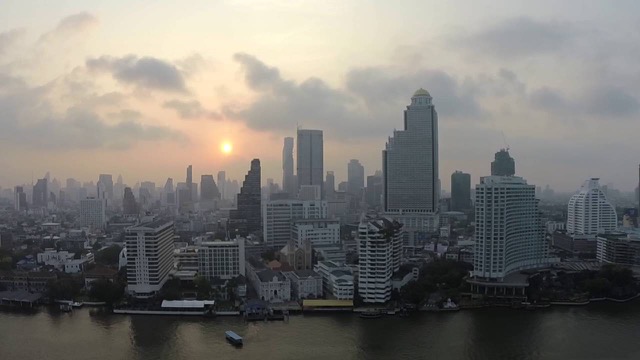Unlike energy, there is no “alternative or renewable air”. Clean air – we either have it or we don’t. And when we don’t, we notice it in ourselves and in our children, as Bangkok residents will tell you given the terrible smog over the past few weeks.
Beyond the colour of the sky, the main method of measuring air quality is by the concentration of pollution in the atmosphere. Recent articles in Bangkok dailies explain the method. The World Health Organization suggests that an air quality index (AQI) reading at 25 or lower is safe.
Since January, Bangkok’s AQI has been well over 100, reaching 203 on February 8, 2018! As with many things, children are even more susceptible to respiratory problems due to air pollution.
No wonder, then, that air pollution is (slowly) rising up on the agendas of policymakers here in Thailand. But the causes are complex and it will take years of concerted effort to clean up the air in the city. So how do to keep our families safe in the meantime?
Restricting activity outside is akin to telling us not to breathe-unrealistic, to say the least. And yet, this is exactly the note I received from my children’s school last week. Face masks are a bandaid solution for unavoidable exposure-but we can’t really wear them in our homes. So besides moving to the clean countryside, what’s left?
Like it or not, treating the air of our indoor environments is the best short-term solution to maintaining our family’s health.
But the market for indoor air purifiers is crowded and a little investment in time and education will go a long way to making the right decision.
Key criteria are air flow, filter surface area and price, both purchase price and filter replacement costs. Beware of inexpensive air purifiers that require filter replacement every 3 months. They end up costing a lot more and are often less efficient even with a new filter. And washable air filters means you are dealing with a lower quality product.
The best purifiers produce clean air on the first pass because they have good air flow and a larger surface area of filter. In this way, cylindrical filters are far more effective than single-pane, rectangular ones. They also last longer saving money on replacement costs. And an efficient motor ensures both good air flow and a quiet performance that doesn’t disrupt your daily life.
One way to be sure is to pick up an indoor air quality monitor. Inexpensive, these units can help you gauge the quality of your indoor environment and the efficacy of the units you are using to treat it.
Editor’s Note: This article is sponsored content from Clean Air Asia.


















